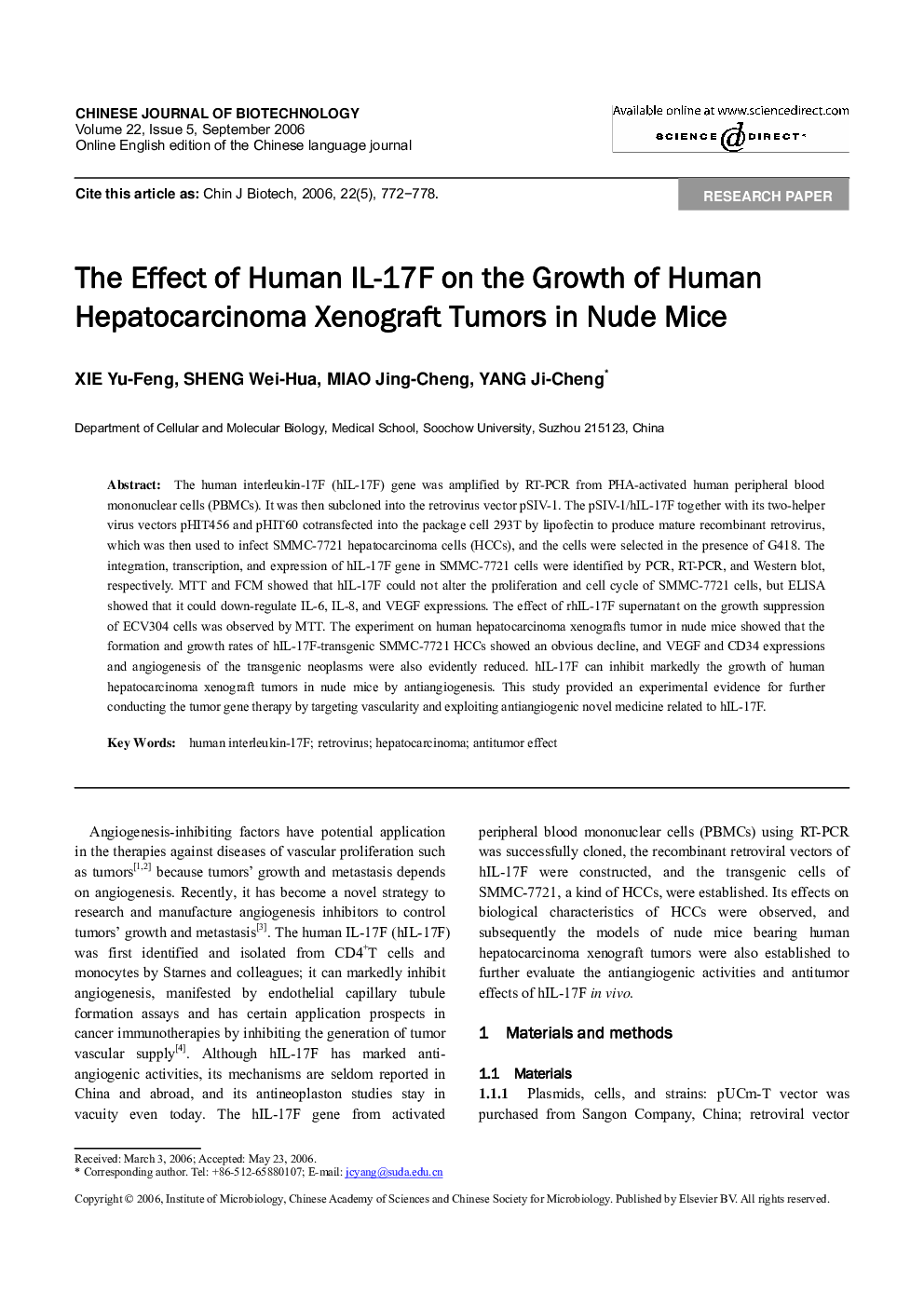| Article ID | Journal | Published Year | Pages | File Type |
|---|---|---|---|---|
| 2079041 | Chinese Journal of Biotechnology | 2006 | 8 Pages |
Abstract
The human interleukin-17F (hIL-17F) gene was amplified by RT-PCR from PHA-activated human peripheral blood mononuclear cells (PBMCs). It was then subcloned into the retrovirus vector pSIV-1. The pSIV-1/hIL-17F together with its two-helper virus vectors pHIT456 and pHIT60 cotransfected into the package cell 293T by lipofectin to produce mature recombinant retrovirus, which was then used to infect SMMC-7721 hepatocarcinoma cells (HCCs), and the cells were selected in the presence of G418. The integration, transcription, and expression of hIL-17F gene in SMMC-7721 cells were identified by PCR, RT-PCR, and Western blot, respectively. MTT and FCM showed that hIL-17F could not alter the proliferation and cell cycle of SMMC-7721 cells, but ELISA showed that it could down-regulate IL-6, IL-8, and VEGF expressions. The effect of rhIL-17F supernatant on the growth suppression of ECV304 cells was observed by MTT. The experiment on human hepatocarcinoma xenografts tumor in nude mice showed that the formation and growth rates of hIL-17F-transgenic SMMC-7721 HCCs showed an obvious decline, and VEGF and CD34 expressions and angiogenesis of the transgenic neoplasms were also evidently reduced. hIL-17F can inhibit markedly the growth of human hepatocarcinoma xenograft tumors in nude mice by antiangiogenesis. This study provided an experimental evidence for further conducting the tumor gene therapy by targeting vascularity and exploiting antiangiogenic novel medicine related to hIL-17F.
Related Topics
Life Sciences
Biochemistry, Genetics and Molecular Biology
Biotechnology
Authors
XIE Yu-Feng, SHENG Wei-Hua, MIAO Jing-Cheng, YANG Ji-Cheng,
